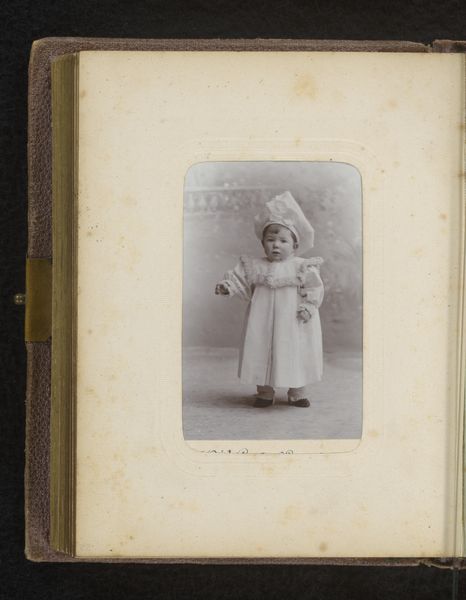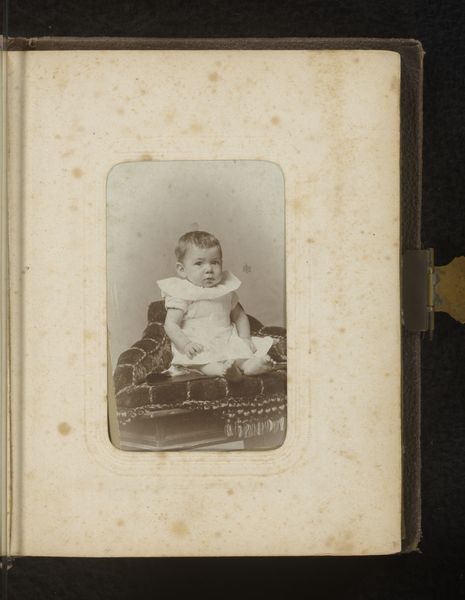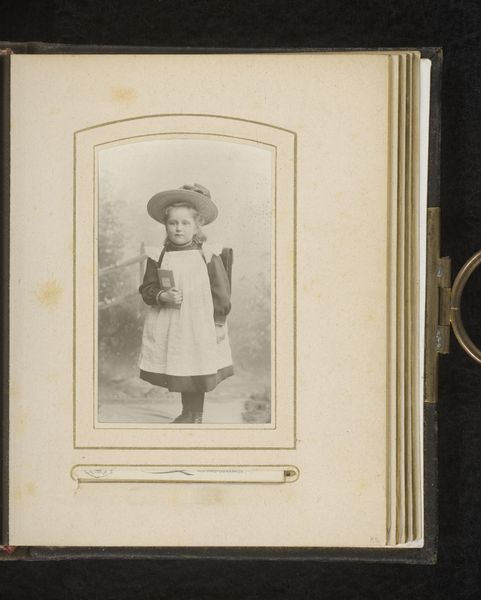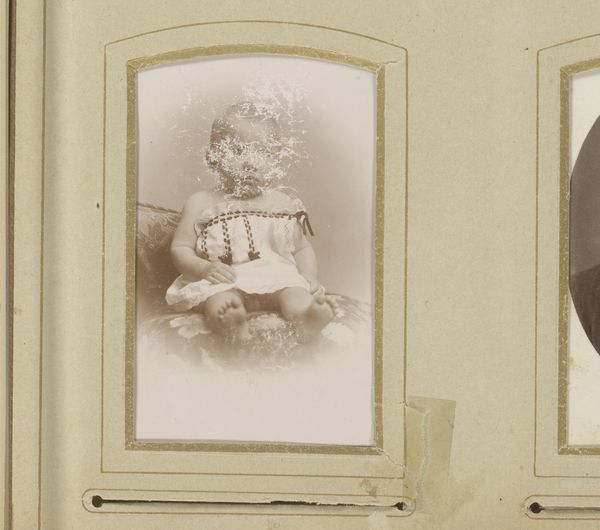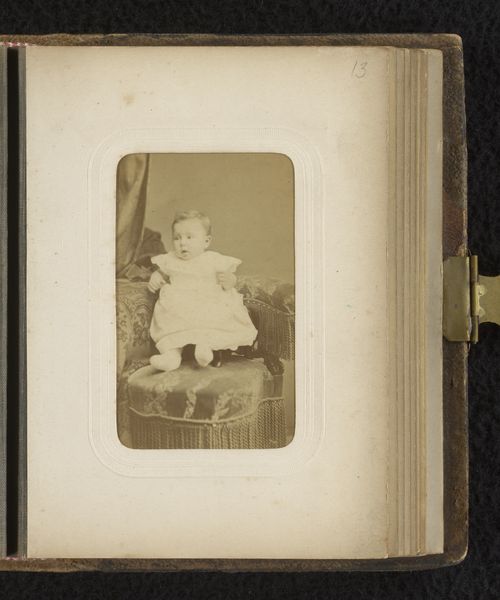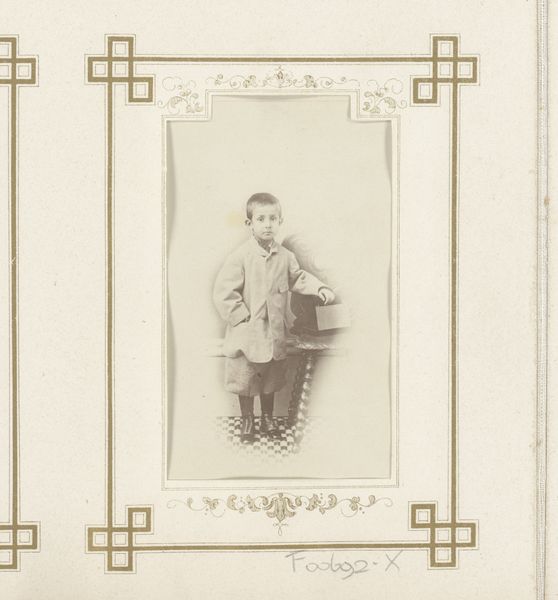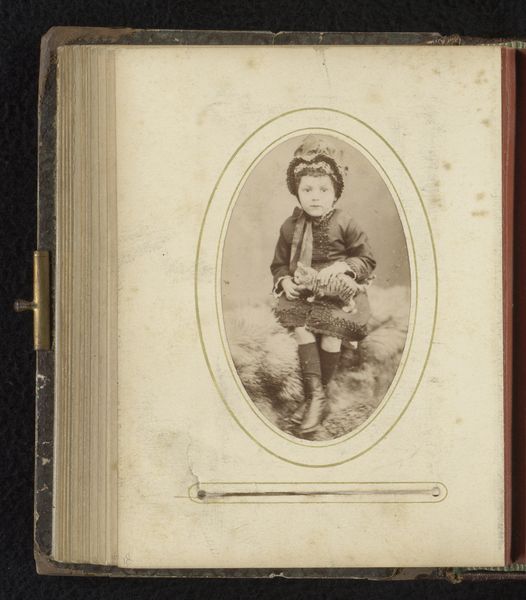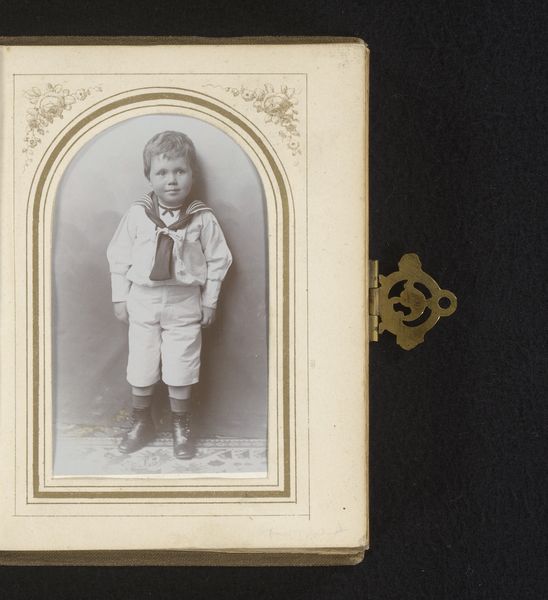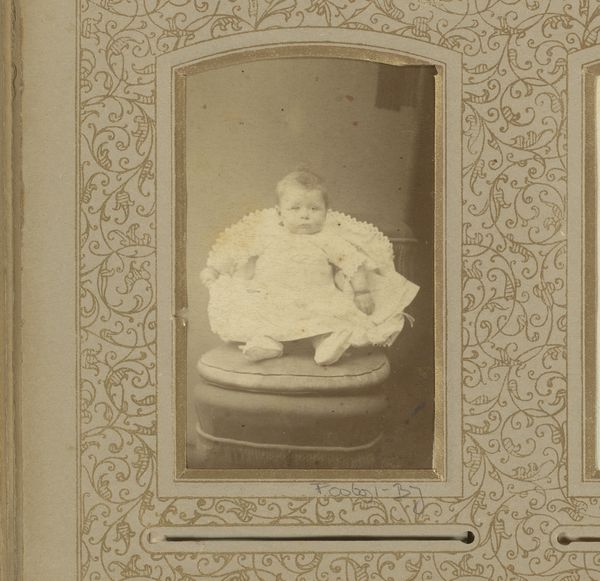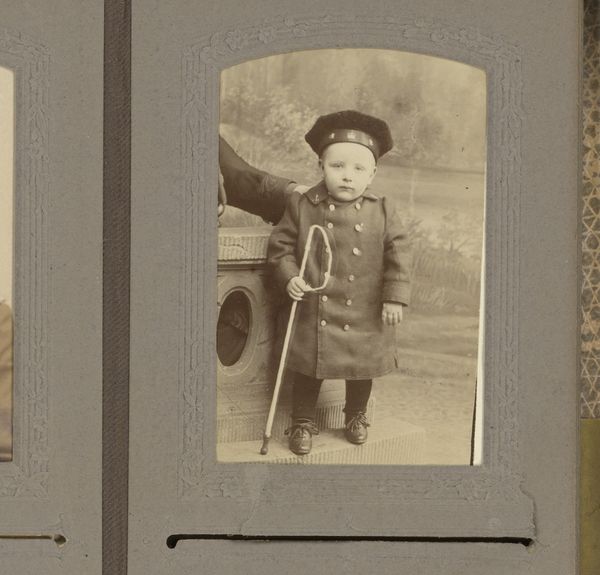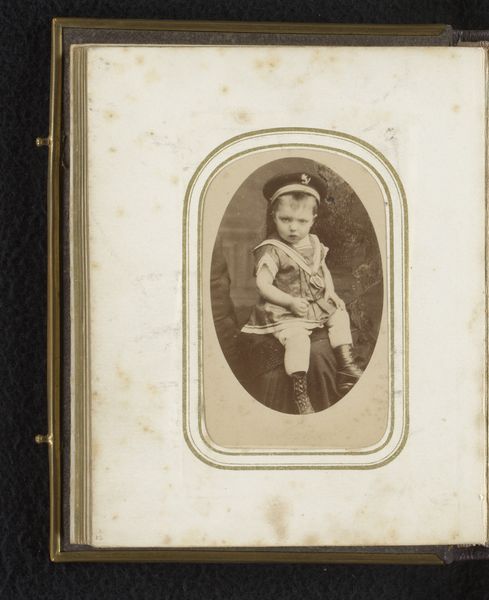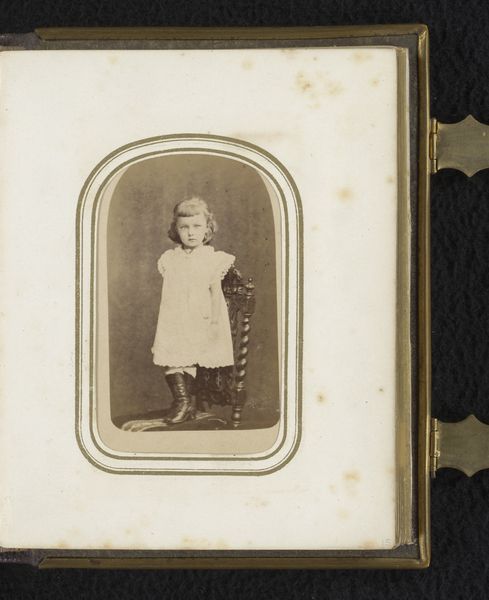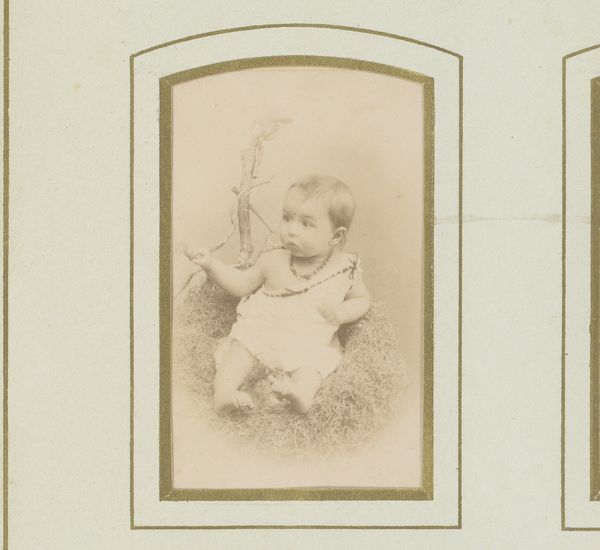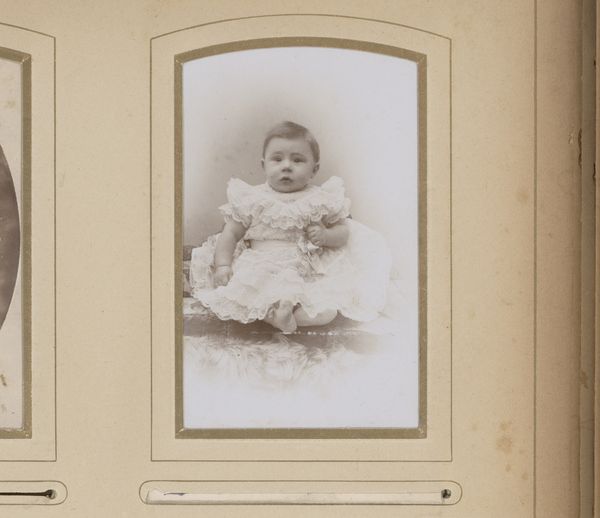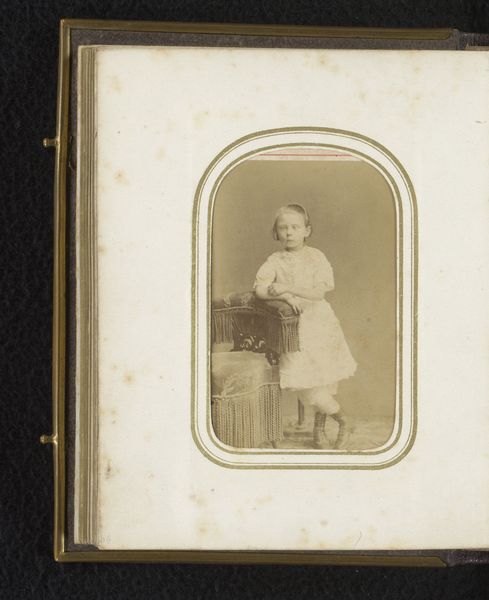
photography, gelatin-silver-print
#
portrait
#
photography
#
gelatin-silver-print
#
realism
Dimensions: height 83 mm, width 52 mm
Copyright: Rijks Museum: Open Domain
Curator: This is "Portret van een peuter" ("Portrait of a Toddler") by Machiel Hendricus Laddé, made sometime between 1880 and 1906. It's a gelatin-silver print. Editor: It's charming! I like the way the little boy is holding a cane, like a tiny adult. What strikes me most is how deliberately composed it feels. How do you read into this photographic work? Curator: Well, let's consider the materials. The gelatin-silver process allowed for mass production, which significantly altered the social function of portraiture. It moves it away from being an exclusive privilege of the wealthy to something more accessible. What does that accessibility suggest about how the process changes its reception in society? Editor: That's a good question. Maybe it allowed more families to document their children’s lives, not just the elite? Photography becoming a keepsake available to wider audiences. Curator: Precisely. And let’s think about the labor involved. The photographer, the studio assistants, perhaps even the person who made the child's clothing... all these contributions are captured within the final product. Even the mass production of gelatin-silver prints relies on a specific kind of industry. Editor: That gives me a totally different perspective. Thinking about the industry behind this individual image connects it to the larger world. I never really considered how photography could be viewed from a materialist perspective, focusing on labor and consumption. Curator: Absolutely. Focusing on these elements really helps break down that divide between art and commodity. Seeing it that way illuminates its historical importance. Editor: Thank you, it certainly reframed how I look at portraiture in general. Curator: My pleasure!
Comments
No comments
Be the first to comment and join the conversation on the ultimate creative platform.
